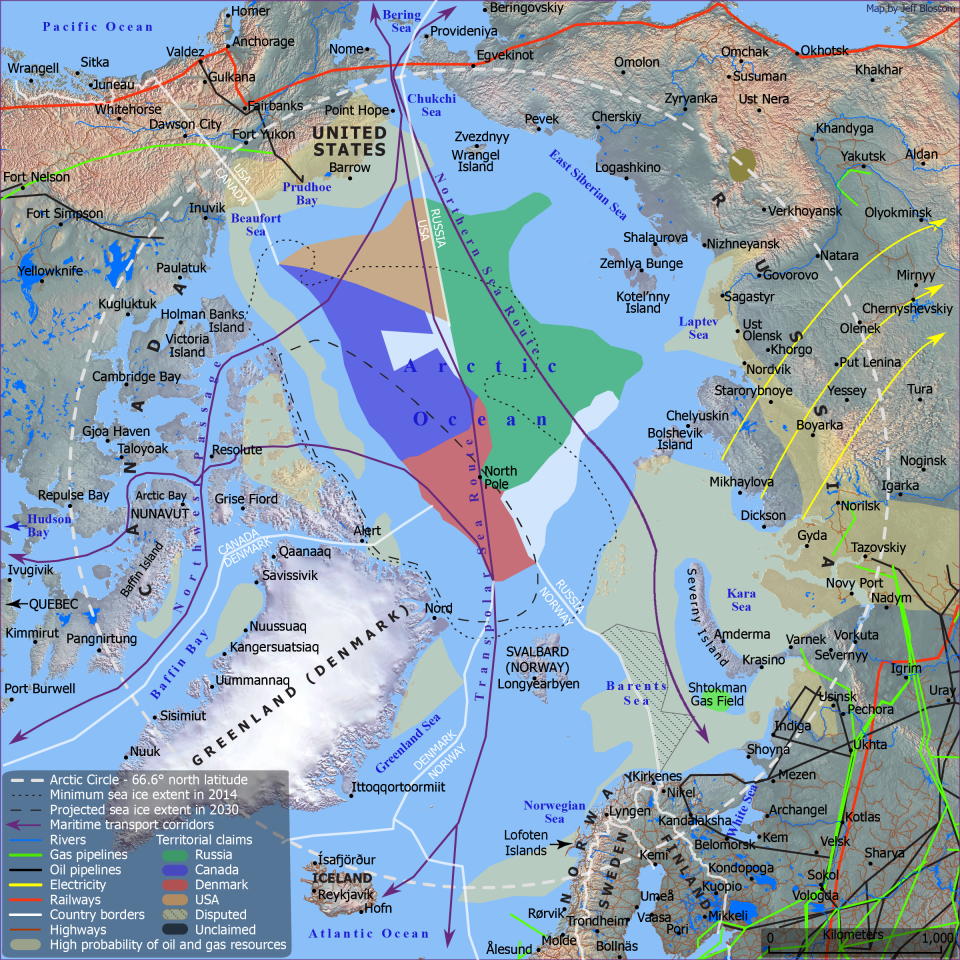The only map you need to see to know the Arctic is the next major frontier
Global warming has increasingly led to the melting of Arctic ice.
And, as the ice melts, the world's last true backwater will become a hotbed of global geopolitical competition.
The following map from Parag Khanna's book "Connectography: Mapping the Future of Global Civilization" demonstrates exactly why the Arctic will become the world's next major frontier.
Largely, the competition in the Arctic will be based off of overlapping territorial claims and the region's high likelihood of having major oil and gas fields:

"Connectography" by Parag Khanna
At stake in the Arctic is an estimated 15% of the world's remaining oil, up to 30% of its natural gas deposits, and about 20% of its liquefied natural gas stored in the Arctic seabed.
Additionally, a global shipping route through the Arctic should the ice clear would be significantly faster than current routes through the Suez Canal.
RAW Embed A potential route, running through the Arctic from Northern Europe to China, would cut shipping time by as much as 22%. This route, should the logistics work out and the correct infrastructure is put in place, would be a major economic boon for both Europe and East Asia.
By 2030, the WSJ notes, the Northern Sea Route will be passable to shipping for nine months a year.
Russia, Denmark, Norway, Canada, and the US all have partial claims to the Arctic Circle with Moscow taking the most definite steps to ensuring that it maintains its influence in the region.
As of December, Russia had finished equipping six new military bases throughout the Arctic in a move to recreate the country's military presence to levels it had during the Cold War.
The six military bases are located throughout Russia and are placed on both the country's northern shore and on outlying Arctic islands.
The locations are now fully equipped with the materials and amenities necessary for long-term deployments of soldiers to the region.
Throughout this year, Moscow plans to begin sending hundreds of military servicemen to the Arctic bases.
NOW WATCH: Watch Russian warplanes fly dangerously close by a US Navy ship
See Also:

 Yahoo Finance
Yahoo Finance 
